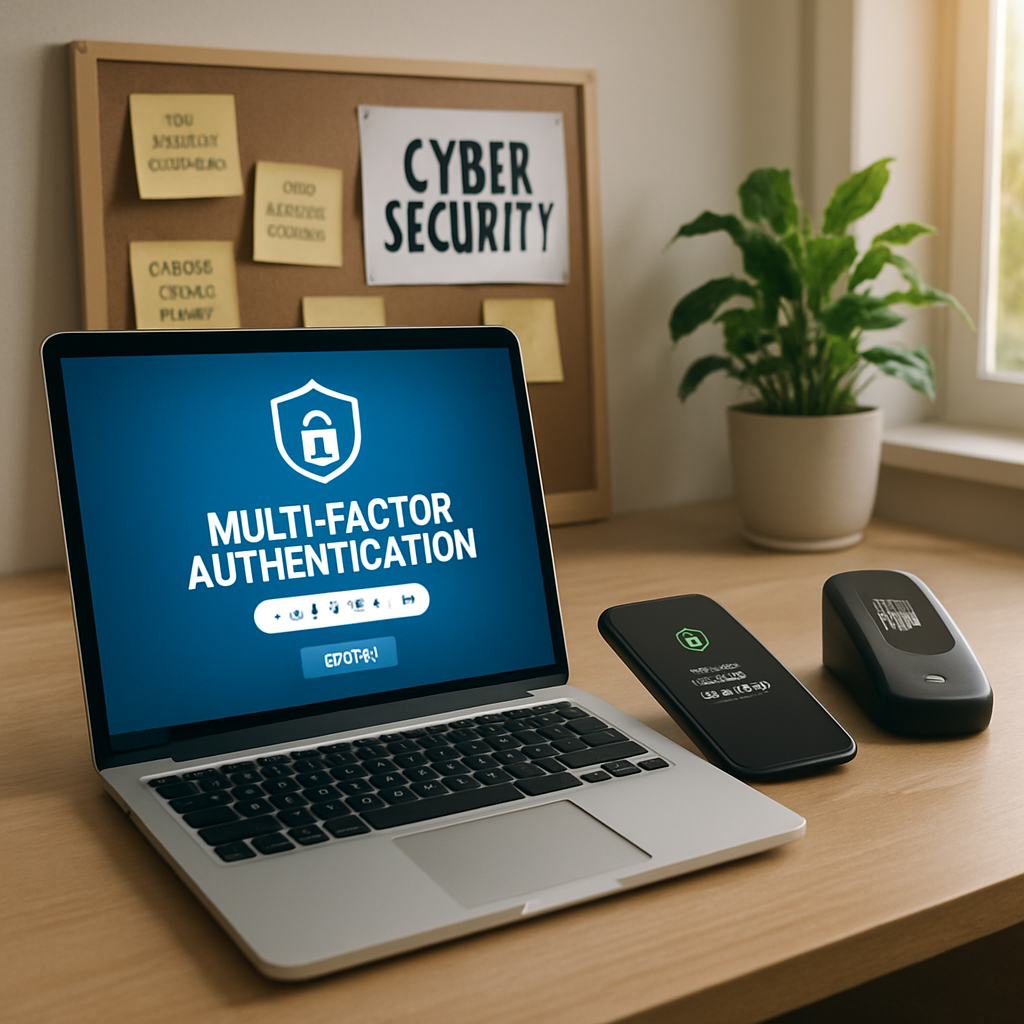AI Voice Cloning: A New Era of Phishing Attacks
AI-powered voice cloning is revolutionizing cybercriminal tactics, ushering in a new wave of compelling phishing attacks that threaten business...

Connecting to public Wi-Fi is convenient, but it's also risky. Learn the top safety tips to protect your sensitive information from cybercriminals.
Public WiFi networks can be found almost everywhere – in airports, coffee shops, libraries, restaurants, malls, and hotels. While these hotspots offer undeniable convenience for remote work, travel, and staying connected, they also introduce significant cybersecurity risks that can jeopardize your personal and professional data. Public networks are typically unsecured, lacking robust encryption or authentication measures. As a result, any information you transmit—including login credentials, corporate data, emails, and financial details—can be easily intercepted by malicious actors using simple software tools.
The threat landscape extends beyond merely eavesdropping. Cybercriminals increasingly deploy sophisticated tactics, such as creating rogue access points—fake Wi-Fi networks designed to mimic legitimate ones in both name and appearance. Unsuspecting users who connect to these fraudulent networks may unknowingly expose all their data and device activity to attackers, enabling them to capture sensitive information or even inject malware. Some attackers exploit standard settings, such as auto-connect features or saved network profiles, to facilitate seamless infiltration.
Awareness of these evolving threats is crucial for anyone accessing public WiFi. By understanding the specific risks of data interception, unauthorized network access, and exposure to phishing or malware, users can make informed decisions and adopt essential protective measures—all of which contribute to a more secure mobile and digital experience.
Before connecting to any public Wi-Fi network, please verify the exact network name and authentication process with a trusted staff member or official signage. Cybercriminals are known to create rogue hotspots that closely resemble established network names, relying on users to make quick assumptions and unwittingly join these fake networks. Confirming the SSID (Service Set Identifier) directly with hotel, café, or venue personnel is an effective first line of defense, ensuring you connect only to the intended legitimate network and reducing exposure to man-in-the-middle attacks.
In addition, exercise caution with any WiFi network that offers open access—meaning it does not require a password—or that uses a generic, non-branded name. Networks without password protection often lack encryption protocols, providing no safeguard against eavesdropping or data interception. These unsecured connections are prime targets for hackers employing packet-sniffing tools to capture logins, emails, or session data as it travels over the network. Prioritize connections to networks protected by WPA2 or WPA3 encryption, and never assume a familiar network name guarantees genuine security.
Instead of connecting to a public WiFi network, could you consider leveraging your mobile network connection as a practical security upgrade? Mobile networks inherently provide stronger data protection because they are built on cellular encryption protocols, making unauthorized data interception significantly more challenging for attackers. Today’s smartphones enable you to easily activate a personal hotspot, transforming your device into a secure wireless access point for your laptop, tablet, or other devices. This private connection utilizes the same carrier-level encryption as your phone’s standard mobile data traffic, significantly reducing your risk of exposure compared to open or poorly secured public Wi-Fi.
For employees handling confidential business communications, financial transactions, cloud application access, or proprietary data, using a mobile hotspot is especially critical. This is particularly important when traveling, attending off-site meetings, or working remotely from client locations. Many mobile plans offer flexible or unlimited data options, making this approach not just a safer alternative but a feasible everyday solution for most users.
Combining hotspot functionality with built-in device management and security features available on enterprise-grade smartphones and tablets further enhances protection. You also retain control over which devices have access, limiting the attack surface for anyone attempting to compromise your connection. Whenever feasible, prioritize your mobile network connection for any activity involving the transmission or receipt of sensitive or regulated information—whether personal, financial, or business-related.
Use a VPN so that your WiFi connection, even if it is unsecured, is private. A Virtual Private Network encrypts all internet traffic between your device and the VPN provider’s secure server, creating an encrypted tunnel that shields your communications from anyone on the same network—including cybercriminals, third-party trackers, or malicious insiders. This means that even if you’re connected to an open or untrusted WiFi hotspot, your online activities and any data you transmit, such as login credentials, business files, or financial transactions, are significantly less vulnerable to interception.
When selecting a VPN, prioritize solutions that offer strong encryption standards (such as AES-256), a no-logs policy, and support for multi-factor authentication. Many enterprise-grade VPNs also include features for split tunneling, DNS leak protection, and seamless integration with remote work tools, further enhancing both usability and security for remote employees and business travelers. For organizations managing a distributed workforce, deploying endpoint-based VPN clients with centralized monitoring is an effective way to maintain confidentiality and regulatory compliance when accessing mission-critical cloud platforms or sensitive databases outside of the corporate network.
Keeping Your Devices Secure
One of the most effective ways to protect your data on public WiFi is to keep your devices secure. Begin by ensuring that all software—including your device’s operating system, applications, firmware, and security suites—is consistently updated. Manufacturers and developers regularly release updates that address security vulnerabilities and harden devices against the latest cyber threats. Enabling automatic updates helps keep your defenses robust.
Use strong, unique passwords for each account and device you own, leveraging password managers to generate and securely store complex credentials. This strategy minimizes the risk of credential stuffing attacks and unauthorized access if one password is compromised. Please don't forget to enable your device to remember passwords, especially for critical accounts, automatically. Stored credentials can provide quick access to your sensitive data if your device is lost or stolen.
You can turn off auto-connect features on your devices to prevent them from automatically joining available Wi-Fi networks without your explicit consent. This prevents your device from inadvertently connecting to malicious or spoofed networks while in public spaces. Turn off Bluetooth and file sharing unless necessary to further reduce the risk.
After using a public Wi-Fi network, you can always log out of your accounts and disconnect from the network when you're done. Regularly clear your browser’s cache and cookies to remove traces of your activity. For added security, enable multi-factor authentication on accounts wherever possible, and consider encrypting your device’s storage to protect data in the event of physical loss or theft. Taken together, these measures help ensure your personal and professional information remains secure, even when accessing high-risk environments.

AI-powered voice cloning is revolutionizing cybercriminal tactics, ushering in a new wave of compelling phishing attacks that threaten business...

Small businesses face growing cyber threats, making multi-factor authentication a critical defense to safeguard sensitive data and ensure business...

Discover how CMMC 2.0 is reshaping cybersecurity compliance for small manufacturers in the defense sector and what steps your business must take to...